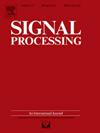EscapeTrack: Multi-object tracking with estimated camera parameters
IF 3.4
2区 工程技术
Q2 ENGINEERING, ELECTRICAL & ELECTRONIC
引用次数: 0
Abstract
Multi-object tracking (MOT) remains a challenging task in dynamic environments. While most 2D tracking methods focus solely on the image plane, they often neglect the Ground Plane Assumption (GPA) — the principle that targets typically move on a consistent ground plane. This is because camera parameters are difficult to obtain and are not very reliable in scenarios involving camera motion or where the GPA does not apply. To address this issue, we propose EscapeTrack, a novel MOT algorithm that robustly handles imprecise camera parameters. Unlike conventional homography projection methods prone to calibration errors, EscapeTrack innovatively models target coordinates on the ground plane as latent variables within a Kalman filter framework. By constructing an observation model that projects these latent states onto the image plane, our method achieves superior tracking accuracy even with significant parameter noise. Extensive evaluations demonstrate state-of-the-art performance on MOT17, MOT20, DanceTrack, SportsMOT, and BDD100K benchmarks. Notably, EscapeTrack excels in scenarios with camera motion or GPA violations, by inherently treating such cases as camera parameter estimation errors. This robustness enables practical deployment in real-world systems where precise calibration is infeasible, advancing intelligent tracking in complex dynamic environments. The source code will be available at https://github.com/corfyi/EscapeTrack.

EscapeTrack:多目标跟踪与估计的相机参数
在动态环境下,多目标跟踪(MOT)仍然是一项具有挑战性的任务。虽然大多数二维跟踪方法只关注图像平面,但它们往往忽略了地平面假设(GPA) -目标通常在一致的地平面上移动的原则。这是因为相机参数很难获得,并且在涉及相机运动或GPA不适用的情况下不是很可靠。为了解决这个问题,我们提出了EscapeTrack,一种新的MOT算法,可以鲁棒地处理不精确的相机参数。与容易产生校准误差的传统单应性投影方法不同,EscapeTrack创新地将地平面上的目标坐标作为卡尔曼滤波框架内的潜在变量建模。通过构建一个观测模型,将这些潜在状态投影到图像平面上,我们的方法即使在参数噪声较大的情况下也能达到较高的跟踪精度。广泛的评估在MOT17、MOT20、DanceTrack、SportsMOT和BDD100K基准测试上展示了最先进的性能。值得注意的是,EscapeTrack在相机运动或GPA违规的情况下表现出色,因为它将这些情况视为相机参数估计错误。这种鲁棒性可以在现实世界系统中进行实际部署,其中精确校准是不可行的,在复杂的动态环境中推进智能跟踪。源代码可从https://github.com/corfyi/EscapeTrack获得。
本文章由计算机程序翻译,如有差异,请以英文原文为准。
求助全文
约1分钟内获得全文
求助全文
来源期刊

Signal Processing
工程技术-工程:电子与电气
CiteScore
9.20
自引率
9.10%
发文量
309
审稿时长
41 days
期刊介绍:
Signal Processing incorporates all aspects of the theory and practice of signal processing. It features original research work, tutorial and review articles, and accounts of practical developments. It is intended for a rapid dissemination of knowledge and experience to engineers and scientists working in the research, development or practical application of signal processing.
Subject areas covered by the journal include: Signal Theory; Stochastic Processes; Detection and Estimation; Spectral Analysis; Filtering; Signal Processing Systems; Software Developments; Image Processing; Pattern Recognition; Optical Signal Processing; Digital Signal Processing; Multi-dimensional Signal Processing; Communication Signal Processing; Biomedical Signal Processing; Geophysical and Astrophysical Signal Processing; Earth Resources Signal Processing; Acoustic and Vibration Signal Processing; Data Processing; Remote Sensing; Signal Processing Technology; Radar Signal Processing; Sonar Signal Processing; Industrial Applications; New Applications.
 求助内容:
求助内容: 应助结果提醒方式:
应助结果提醒方式:


